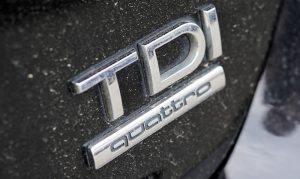In Part One of this post, we reminded ourselves of what a DPF did and looked at its shortcomings. In this part, we’ll look at why the DPF is necessary and how to live with one.

The DPF is not the Devil’s work
DPF-related articles and YouTube clips are haunted by angry motorists. You can find them in the comment sections, often arguing that DPF is an ineffective and unnecessary evil. That it’s foisted on us by Brussels bureaucrats and a Green conspiracy. And so on.
As motorists, it’s all too easy to get wrapped up in what a pain the DPF is for us. But looking at the bigger picture, we think the DPF has to be seen as a remarkable bit of kit. All the inconvenience and expense it causes (see Part One) has to be weighed against its benefits for human health — and those are likely to be huge.
All over the world, DPFs are removing countless tonnes of soot from the air. We’ve always known that soot is no good for us, but it’s only recently that medical science has started to show quite how much damage it does. As we blogged recently, particulates have been shown to contribute to lung and cardiovascular illness, particularly in the elderly and the young. According to the World Health Organisation:
Worldwide, [particulates are] estimated to cause about 25% of lung cancer deaths, 8% of COPD deaths, and about 15% of ischaemic heart disease and stroke
There’s no way round it: particulates cause a lot of illness and death. Now obviously, not all particulates exposure is from diesels. But the uncomfortable fact remains that diesel exhaust does contribute toward severe health problems. However imperfect DPFs might be, at least they mitigate against that.
Look at it this way: having a DPF is doing your bit to minimise your vehicle’s impact on other people’s health and of their vehicles on yours. Despite the cost and the inconvenience that the DPF causes, surely that’s worthwhile?
Living with your DPF
With all that said, let’s look at how you and your DPF can get along better.
1. Stretch your diesel’s legs
The best way to prevent DPF problems is to give your car the right conditions for passive regeneration. Driving continuously above 40 mph for fifteen minutes should allow this to happen, and most manufacturers recommend this should be done every few hundred miles. In practice, that’s going to mean finding a good stretch of A road or motorway. A run like this allows the exhaust to reach high enough temperatures to burn away the soot.
2. Try to slow the build-up of soot
Soot builds up most quickly in the DPF when journeys are short and there’s a lot of starting and stopping. With some lifestyle adjustments, it might be possible to reduce these types of journeys. For example, if there’s a petrol car in the household, could this be substituted for the very shortest trips? Or could you forego the car altogether? OK, we know that fitting your lifestyle to suit the car is the tail wagging the dog, but if adjustments are easy, they might be worth considering.
3. Let the engine complete its active regeneration
If the car hasn’t had chance to passively regenerate, within a few hundred miles it will try to do this actively. The ECU artificially raises the exhaust temperature by, for example, injecting more fuel into the cylinders. If the active regeneration process can be completed, the troublesome soot will be burned away. However, if the engine is switched off before the process has finished, the soot build up will continue.
So how do you know regeneration is happening? The signs are covered in Part One, but to save you looking, they are:
- increased fuel consumption
- increased idling speed
- an acrid smell
- deactivation of stop-start systems.
The process should take 5 -10 minutes to complete. If you spot that regeneration is underway, one option might be to extend your journey going to allow the engine to do its stuff.
4. Take action if the DPF light comes on
Once the DPF warning light comes on, it’s a sign that the car’s efforts at active regeneration haven’t completed. Then it’s time to take the car on a run, as discussed above. More start-stop driving will only make the situation worse: eventually, the dash will start showing other warning lights and may even go into ‘limp home mode’. Not long after that, the DPF will need to be cleaned or replaced.
Does a diesel fit your life?
Taking longer trips than you need, watching out for strange smells from your engine, doing shorter trips in a second car…we agree that it all sounds a hassle. We love our diesels, but the fact is that modern ones are not designed to take exclusively short, urban journeys. If that’s pretty much all you do, a petrol (or increasingly, an electric) car might better suit your needs.
Whether your vehicle is Skoda, VW, Audi or SEAT (or any other marque), WVS are here for your MOT, servicing and repair needs. Please get in touch with our friendly team.

